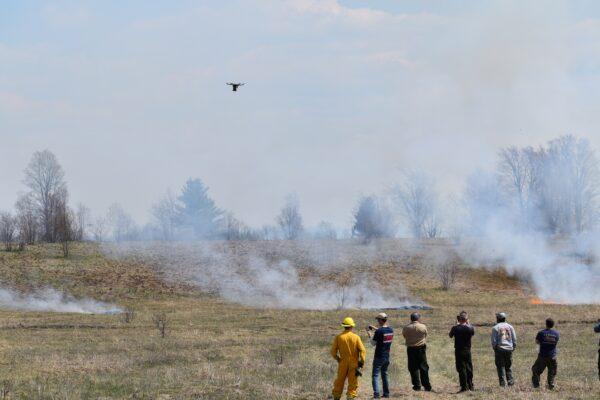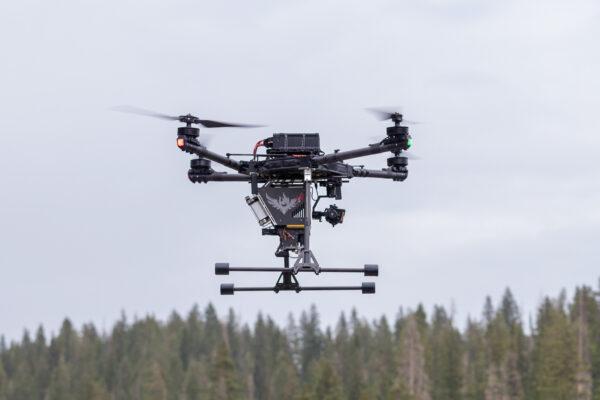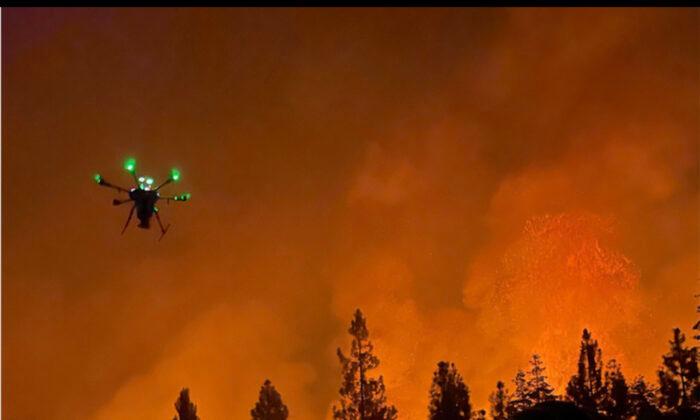A tech company in the Midwest is using drones and software to help firefighters contain wildfires in a new way.
Drones dropping flaming spheres may sound like a futuristic battlefield technique. And in a way, it is. It’s a way to “fight fire with fire,” as the drones drop small fireballs to create controlled burns.
The drones are the brainchild of the Drone Amplified team. CEO and cofounder Carrick Detweiler has been with the company since 2015.
“We have our IGNIS system, which attaches to drone systems,” Detweiler told NTD, a sister media of The Epoch Times. “[They] have these little ping-pong balls; they’re these things that actually have a chemical inside, and relatively inert to start out with, but right before we drop them we puncture them and inject them with a second chemical that starts a reaction right after we drop it.”
The company refers to them as Dragon Eggs. The spheres ignite after 30 to 60 seconds to start a small fire.
The drone-based aerial ignition system can deploy up to 120 spheres a minute and control spacing, such as one sphere every 50 feet, depending on what the wildfire requires.

“So that allows firefighters to precisely look at where they want to put down this fireline to create a backburn to use up all the fuel in advance of a wildfire,” said Detweiler.
He said Cal Fire uses their systems.
“So we have more than a hundred systems out in the field right now. A lot of those are with the federal agencies U.S. Forest Service and Bureau of Land Management, but we have systems in California with Cal Fire, and Oregon, Colorado, all the way to Florida,” he said.
In California, 2022 has been another rough year in terms of wildfires, with over 6,700 fires occurring so far. Some of the worst were the Mosquito Fire and Fairview Fire.
Detweiler said there’s a labor shortage, and he wants to provide tools to help make firefighters’ jobs more effective.
“We got connected with the forest service and Bureau of Land Management and realized that there [were] actually a lot of challenges involved in combating these wildfires, in particular the dangers of aviation and the need for more people and looking at how the technology can fill this gap where there are not enough firefighters to do the job safely,” he said.

For the past few decades, environmental red tape has limited the practice of prescribed burns. But Detweiler said things are changing.
“We’re seeing that change in the firefighting community as we’re recognizing that fire is part of the natural ecological process, so you really need to have fire regularly to use up all the debris on the forest floor so when there is a fire it doesn’t become these massive wildfires. It’s just a minor fire that’s easier to put out or contain, and let these natural processes occur,” he said.
He works with a small team of about 10 people, and they build all of their systems in-house. In addition to aerial ignition, they have software that can utilize thermal and visual cameras to see fire through smoke and help with mapping, providing the latest data with an “eye in the sky” to increase situational awareness.
The team started out developing prototypes as a part of their research at the University of Nebraska-Lincoln. After proving that the concept worked, Detweiler and his team saw a commercial opportunity and began a startup around their drone research, later becoming Drone Amplified.
The company envisions its drones being used on every wildfire, as they believe that their system saves both money and lives.

